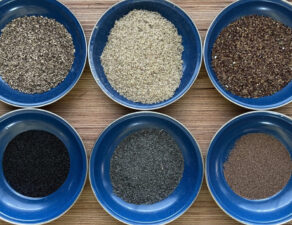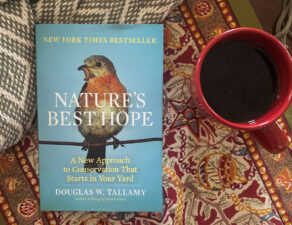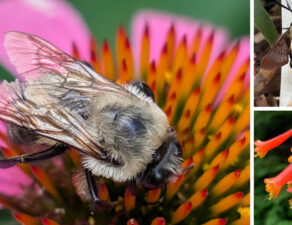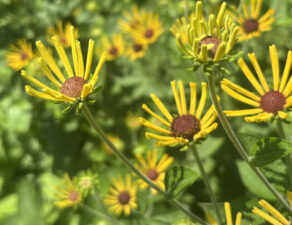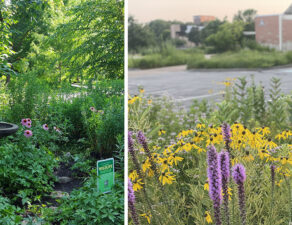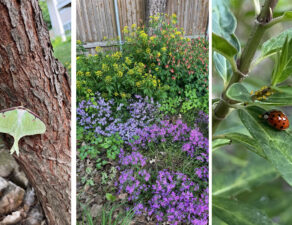
By: Thomas Kennedy-Croft
Photos: Cydney Ross
In partnership with Rockhurst University, Writing for the Environment students have authored this month’s Introduction to Native Plant Gardening Beginning / Refresher Garden Series article.
From choosing your favorite native plants and dreaming of summertime blooms and butterflies to the joy of putting your new baby plants in the ground, putting in a new garden can be exciting! After the planting phase, however, new gardeners may find themselves confused about how to care for their new addition. In today’s article, we’ll provide some helpful tips to manage native gardens for both beauty and wildlife benefit.
Immediately after planting, give all your new plants a thorough watering. To help them get established, new gardens should be watered three times during the first week, twice during the second week, and then once per week for the first year.
After planting you may also want to think about a soil cover like a light layer of mulch to help hold in moisture and prevent weeds. This is optional, but usually recommended for the first year in a new native garden. After the first year the plants will fill in more space and you may decrease or eliminate mulching.
As the garden matures, it’s important to think of our role as garden management, not maintenance. The difference is subtle but important. Instead of trying to maintain the garden in its current state, guide it thoughtfully through growth and change. As you work in the garden, you may wish to keep record of your actions so you can review them and make changes year-to-year. Each new season will bring decisions to make.
During the late winter months, you should take the time to inventory your tools and make sure you have everything needed. This is also the time to prune many shrubs and trees – make sure to do your homework so you know which species to prune now and which to leave for fall.
In early spring you should see the signs of your garden waking up. An important task in the early spring is weeding. You don’t have to be hasty in removing a plant you are unsure of. Native plant seedlings can look different from the fully grown plant so when in doubt, it’s okay to wait a few weeks or to consult identification resources.
Leave dead winter stems standing as they are a great habitat for pollinators like native bees. You will be able to trim these stems later; however, for the benefit of the native species they should be kept standing until spring. You may also wish gently clean up and any areas where you have a thick layer of last year’s fall leaves, which can now be composted.
In late spring, keep up the regular weeding. A great thing to do during this time is to share the bounty you have in your garden. If you notice seedlings that you just don’t have space for these can be transplanted to a new location or given away. You may also wish to give any tall fall blooming plants the “Chelsea Chop” in early May. This involves removing one-third to one-half of the plant’s height to decrease its total height at bloom time. This is often done for taller species of asters and goldenrods.
During the late months of the summer, continue to keep up with weeding chores, and ensure your new garden gets enough water, whether through rainfall or watering. Watering deeply less frequently is better than watering a little every day. You can also remember to stake or support any taller stems during this time. If you have any plants that tend to reseed prolifically, you may wish to remove the spent flowers before they set seed.
The fall months are a great time to add more plants to your garden if you’d like. Make sure to keep them watered well! This is also an ideal time to plant shrubs and trees to give them a head start for spring. Once again, continue weeding throughout the fall making sure to help those new plants as much as possible.
In the early winter months, enjoy the winter and texture of your garden as it changes. Take the time to review your management notes and make plans for next year. Start a native plant wish list for spring planting. Make sure to keep an eye on the weather and provide water during dry periods or just before a cold snap. This will help insulate your new gardens against the tough conditions.
Caring for a native garden doesn’t have to be confusing or complicated. In addition to learning from your own experience, there are resources to guide you, and a great community of gardeners who are willing to share their knowledge. For more details on managing your garden, check out episode five of our Beginner/Refresher Native Plant Gardening Webinar Series on the Deep Roots website.
